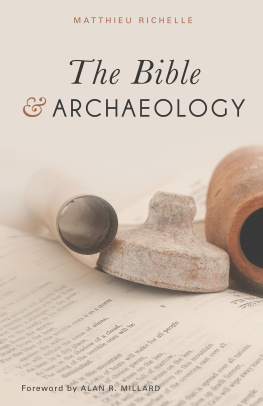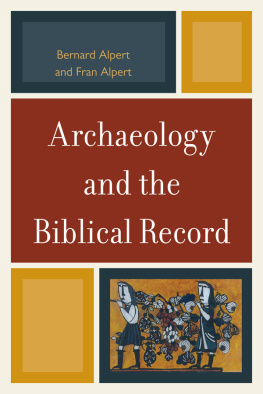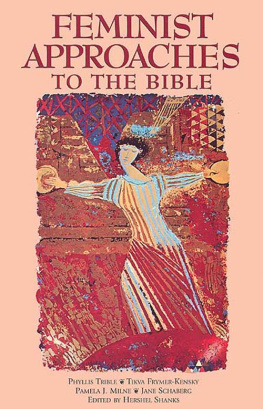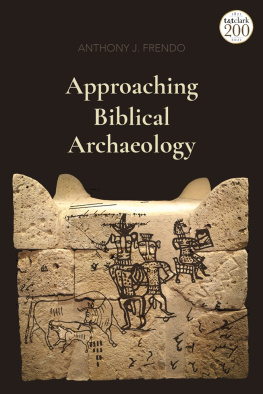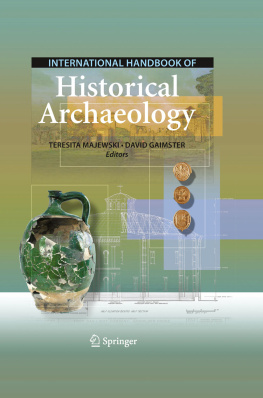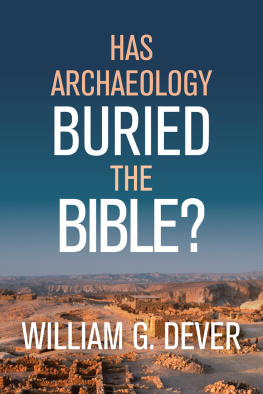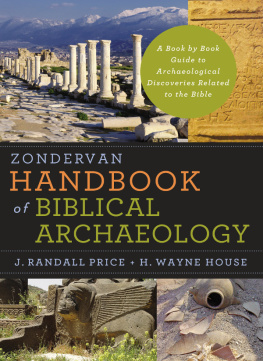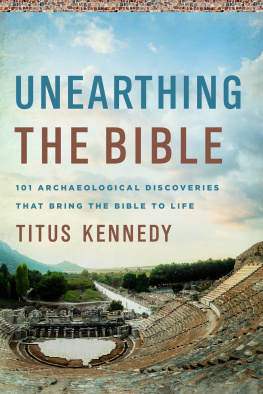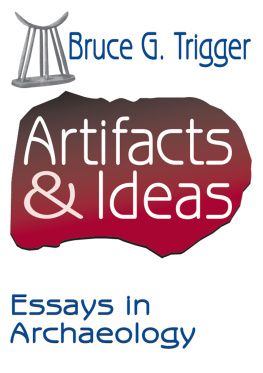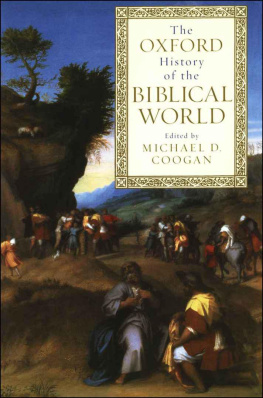All rights reserved. No part of this book may be reproduced or transmitted in any form or by any means, electronic or mechanical, including photocopying, recording, or by any information storage and retrieval system, without permission in writing from the publisher.
Due to technical issues, this eBook may not contain all of the images or diagrams in the original print edition of the work. In addition, adapting the print edition to the eBook format may require some other layout and feature changes to be made.
Figures 121 and 2431: photographs by Matthieu Richelle.
Figure 22: drawing by Matthieu Richelle.
Figure 23: photograph by C. Amit, Israel Antiquities Authority and Khirbet Qeiyafa expedition; used by permission.
LIST OF FIGURES
Figure 1
The Damascus Gate.
Figure 2
Remains of the fortress of Horvat Uza.
Figure 3
Trench showing the build-up of strata at Tel Rehov.
Figure 4
Remains of the royal palace of Samaria.
Figure 5
Principal altar of Tel Dan, represented by a metal structure, and steps.
Figure 6
Altar with horns at Beersheba, reconstructed by archaeologists.
Figure 7
The platform or high place of Tel Dan and the imposing staircase that leads to it.
Figure 8
Detail of a wall of the Tel Dan platform.
Figure 9
Segment of the rampart of Jerusalem, dating to around 700 BCE.
Figure 10
Gate with six rooms at Gezer (seen from behind).
Figure 11
Inside the Tel Dan gate compound, a pedestal (?) and stands in the form of pumpkins, perhaps for capitals.
Figure 12
Four-room house at Tall al-Umayri, partially reconstructed by archaeologists with wooden pillars (in this photo, we can see face-on three parallel rooms separated by pillars).
Figure 13
Four-room house at al-Lahun, seen from the side: on the left, the three parallel rooms; to the right, the fourth perpendicular room, in reality divided into three sections (the first, closed off by a wall, is seen in the foreground; the two others were separated only by two pillars (which can be seen in the middle).
Figure 14
Building with pillars at Beer-Sheba.
Figure 15
A building with pillars (and basins) at Megiddo.
Figure 16
Mortars (Qumran).
Figure 17
Oil press from the eighth century (Hazor).
Figure 18
Silo (Megiddo).
Figure 19
Birds-eye view of the staircase leading to the underground tanks at Beersheba.
Figure 20
The holy of holies of the sanctuary of Arad, with its restored incense altars (in the foreground) and standing stones (in the background).
Figure 21
Birds-eye view of the stone ramp at Masada (which covers the long incline in the lower left hand corner of the photograph).
Figure 22
Ostracon A1 from Hisban (drawing by M. Richelle).
Figure 23
The Qeiyafa ostracon.
Figure 24
Qumran cave 4.
Figure 25
Quarry at the City of David, with a stone carved out of the rock still on site.
Figure 26
The traditional Pool of Siloam.
Figure 27
A staircase leading to the Pool of Siloam.
Figure 28
Buildings at Tel Rehov near the site of the hives.
Figure 29
The six-chambered gate of Hazor.
Figure 30
The Dome of the Rock, on the Temple Mount, possibly in the place where Solomons Temple was situated.
Figure 31
The Stepped Stone Structure on the eastern slope of the City of David.
FOREWORD
Can we see the remains of Davids palace in Jerusalem? visitors ask. Yes! says one archaeologist, Ive found some of its walls. No! says another, those walls were built one hundred years later! Why does archaeology not give a clear answer to the question? Matthieu Richelle explains in his clearly written study what archaeology can offer to help us understand the Bible and what it cannot. Museums are full of ancient objects, and archaeologists find more every year; and many others are found by accident when foundations are dug or roads cut through the landscape. Yet in addition to the great range of artifacts recovered, we should remember that many more still lie buriedor, more significantly, have disappeared. Textiles, leatherwork, basketry, and woodwork rot in even slightly damp conditions, so a large part of the equipment of ancient life is lost. Only rare circumstances allow books written on papyrus or leather to survive, as the Dead Sea Scrolls have done in the arid climate on the border of the Dead Sea. They are about two thousand years old, and no older copies of books in Hebrew have been discovered. Did any exist? Richelle discusses the debated question of when the histories of Israel and Judah were written and shows that it is reasonable to suppose that the books of Samuel rest on records from the days of David and Solomon, rather than being wholly later compositions, as many modern writers assume. Part of the evidence comes from his research on ancient Hebrew inscriptions found in the Holy Land.
To come to archaeology expecting to make particular discoveries is the wrong approach. The archaeologist seeks to learn about a place, its buildings, its people and their activities, the changes the place experienced over the centuries, and its relations with other places. When discoveries do produce a link with the Bible, they need very careful evaluation before any conclusions can be drawn. Carved ivory fragments found at Samaria hint at the splendor of king Ahabs palace there, although they may not actually have decorated it. There are Hebrew writings apparently acknowledging the goddess Asherah beside Israels God, but they should not lead to the conclusion that all Israelites worshipped her.
Matthieu Richelle demonstrates the positive contributions that archaeology can make to a better understanding of the Bible in its ancient world. He uses the most recent debates about the dates of buildings that might have been erected at Solomons orders, or at Ahabs a century later. He shows how the uncertainty results in part from the way some scholarsnotably the authors of Th e Bible Unearthed: Archaeologys New Vision of Ancient Israel and the Origin of Its Sacred Texts (2001)assume that the biblical reports have little factual basis, and also in part from attempts to use the carbon 14 technique to define the dates of the structures. The differences of opinion among scholars continue, but through Richelles book readers will be better able to disentangle the factual from the hypothetical as they try to evaluate the evidence. The endnotes guide readers to major sources and discussions.
Rightly interpreted, archaeological findings and the Bible are complementary. Some questions and problems cannot be resolved at present because the evidence from outside the Bible is too meagre, a fact often ignored, so there is more work to be done, more to be found, more to be learned. However, readers should always be aware that the Bible is primarily a book of theology that demands a response of faithyet it also provides facts to accompany that faith.
The well-organized chapters that follow present a selection from the contributions archaeology makes to our understanding of the Bible, and their judicious and fair assessments make them a reliable introduction to the subject. Since this books original publication in French in 2011, the author has revised the work to strengthen his arguments and to bring it up to date. It will be a welcome guide for anyone interested in archaeology and the Bible.

